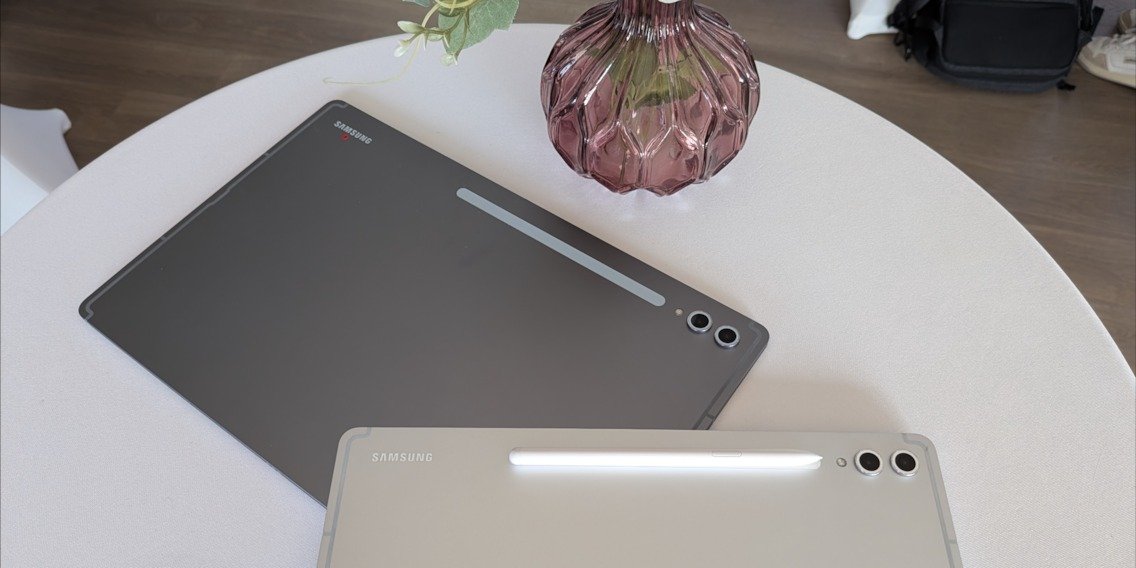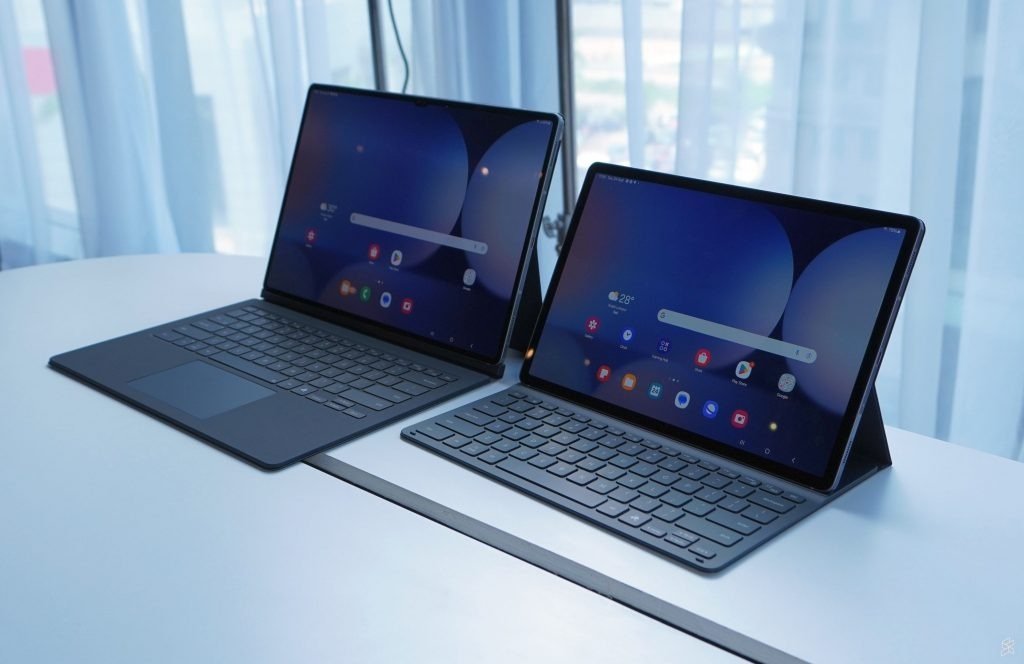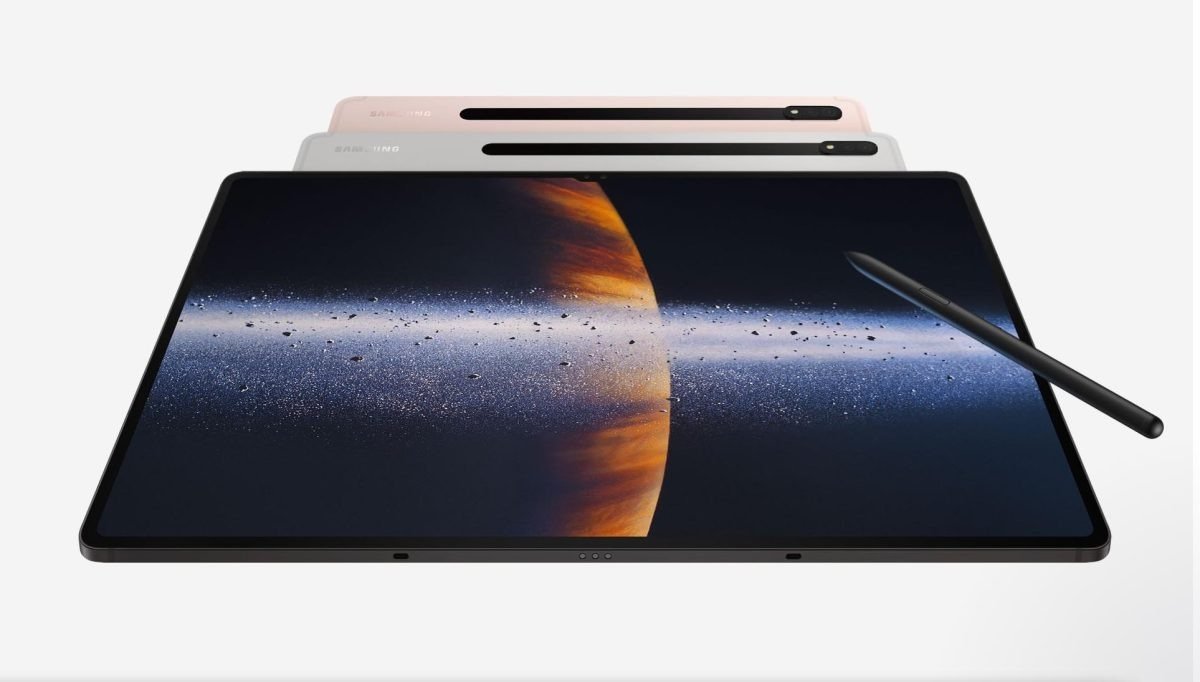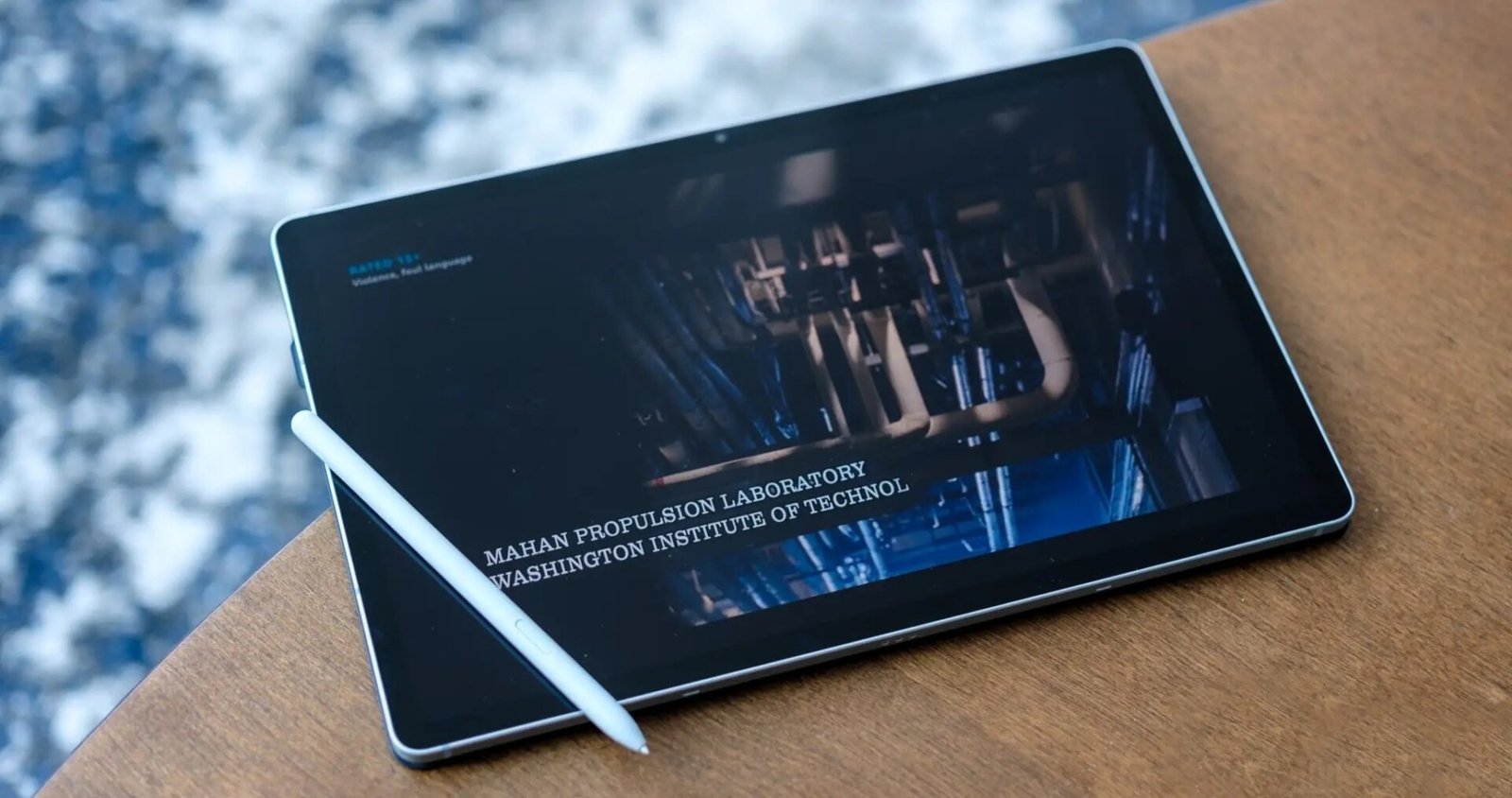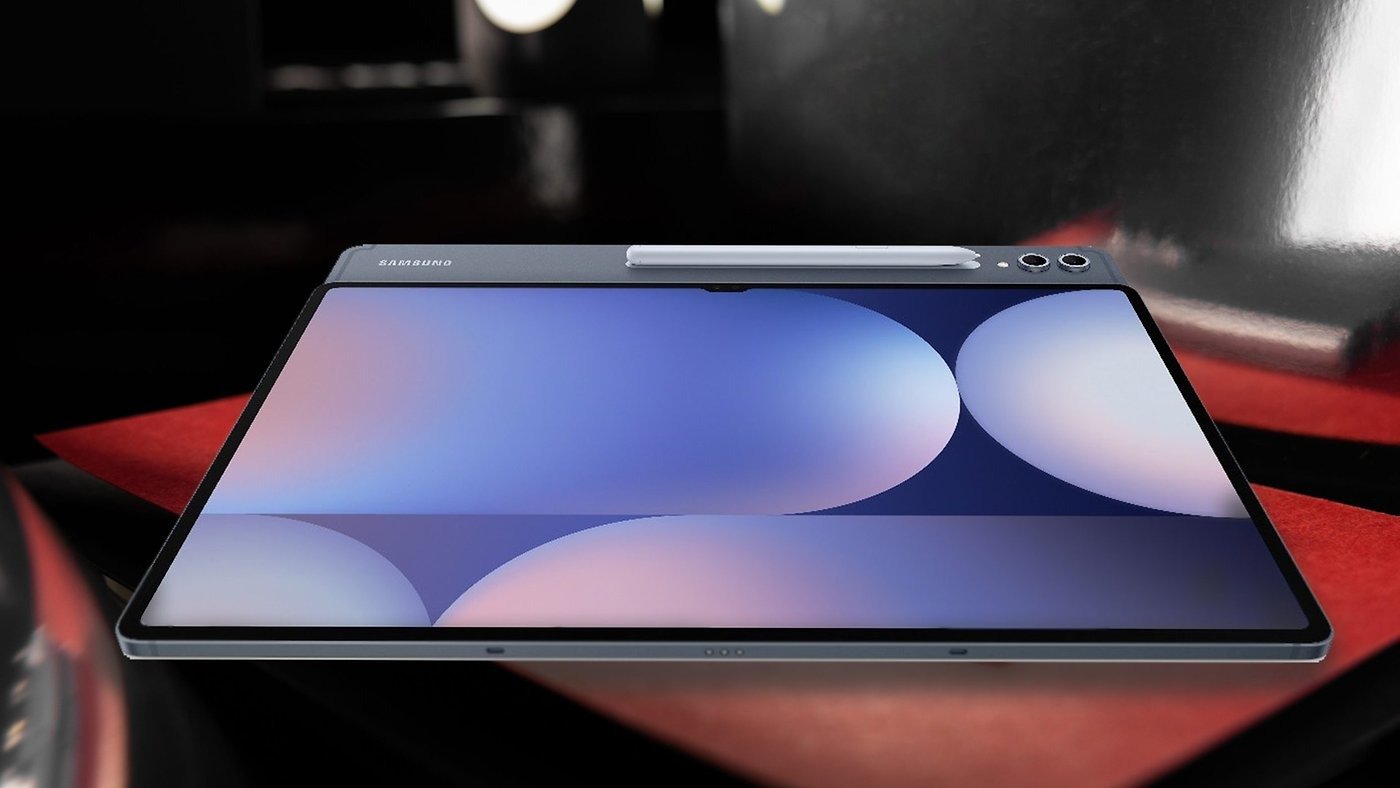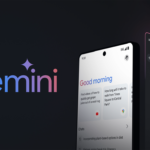Introduction.
For whatever reason, Samsung seems to have dropped the regular Galaxy Tab S10 option this year. This leaves the Samsung Galaxy Tab S10 Plus as the only option for those who don’t want to shell out the big bucks for the Galaxy Tab S10 Ultra.
Which begs the question: what is the ‘Plus’ for if this tablet doesn’t exist in relation to a lesser or smaller model? Perhaps we’ll see a smaller Galaxy Tab S10 in the future, but for now we’re going to register a mild protest and move on.
Like the Samsung Galaxy Tab S9 Plus before it, the Tab S10 Plus is a large premium tablet with a vibrant 12.4-inch AMOLED display, a hefty 10,090mAh battery, a dual rear camera, flagship-level performance and a bundled S Pen stylus.
In fact, right off the bat, we can’t see much difference between the 2024 and 2023 models of Samsung’s mainstream super-sized tablet.
Of course, that’s not necessarily a bad thing. Given how well we liked the Galaxy Tab S9 Plus, and the fact that no one in their right mind upgrades their tablet every year (or even every other year), an iterative update might well be all that’s needed.
Design
- Almost identical design to the Tab S9 Plus
- S Pen attaches to the back
- IP68 rated
- Four loud and clear speakers
Samsung talks about the design of the Galaxy Tab S10 Plus as having “a touch of innovation in every detail”, but that seems a bit of an exaggeration. In fact, it looks and feels very similar to the Galaxy Tab S9 Plus.
Its footprint of 285.4 x 185.4mm is literally identical to its predecessor, while its thickness of 5.6mm is just 0.1mm thinner. The basic look of the tablet is also very familiar, with the same uniform display bezels on the front, the same flat-edged aluminium frame and exactly the same layout on the back.
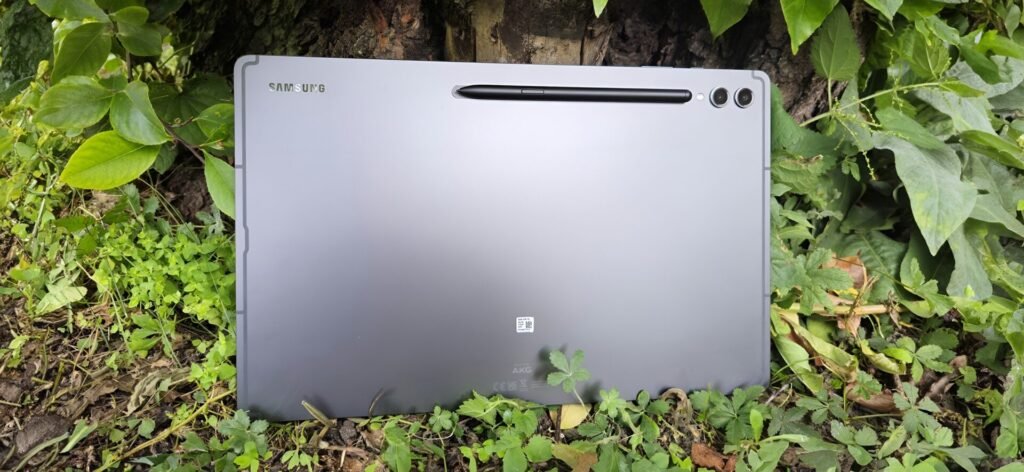
Once again, you have two discreet, round camera units sitting side by side in the standard landscape orientation, with a flash to the left of them. You also get the same elongated plastic strip for the magnetically attached S Pen stylus, although one change to the formula is that it’s now bright white.
Not that Samsung should be singled out for sticking to a game plan here. Take a look around the wider tablet landscape and you’ll see that most of the major Android tablet manufacturers have adopted a similar look, which in turn is very close to Apple’s peerless iPad design language.
Comparisons aside, this is a beautifully crafted tablet in either Moonstone Grey or Platinum Silver (the model pictured here), with a solid feel despite its thinness. You also get IP68 certification, which is more than any iPad can offer. You probably won’t be using your tablet in the rain, but you might want to prop it up in the bath or by the pool on holiday.
Another eye-catching feature is the in-display fingerprint sensor. Most tablets use a power button-based solution, which can be difficult to find in a pinch. Apple’s Face ID is still the best biometric authentication system for tablets, but Samsung’s is a close second in terms of accessibility. It’s also fast and reliable.
There are four speakers along the left and right edges, one of which flanks a USB-C port. These deliver loud, clear stereo output, making them ideal for watching films and TV content and playing games when headphones aren’t required. There’s no 3.5mm headphone jack, which is a bit of a shame given the size of the tablet, but not unusual.
There’s a dedicated microSD slot on the top of the tablet, which is always welcome, even if most people won’t need to use it.
We’ve mentioned that there’s a place to attach the S Pen on the back of the tablet, and this relates to the fact that you get one of Samsung’s compact styluses with every Galaxy Tab S10 Plus. It’s a point of differentiation that continues to serve Samsung well in its battle against the iPad.
The S Pen is a brilliant stylus, offering a responsive and tactile writing experience and a well-considered, streamlined design that is about the size of a ballpoint pen or pencil. From scribbling notes to composing images and signing PDF documents, it’s a genuinely useful tool on such a large tablet. I’d argue it’s far more practical here than on a smartphone like the Samsung Galaxy S24 Ultra.
Screen size
- 12.4-inch OLED display
- HDR10+ compatible
- 120Hz refresh rate
It may be the same panel as the Galaxy Tab S9 Plus, but if that means a 12.4-inch 1752 x 2800 OLED with a 120Hz refresh rate, you won’t hear any complaints from me.
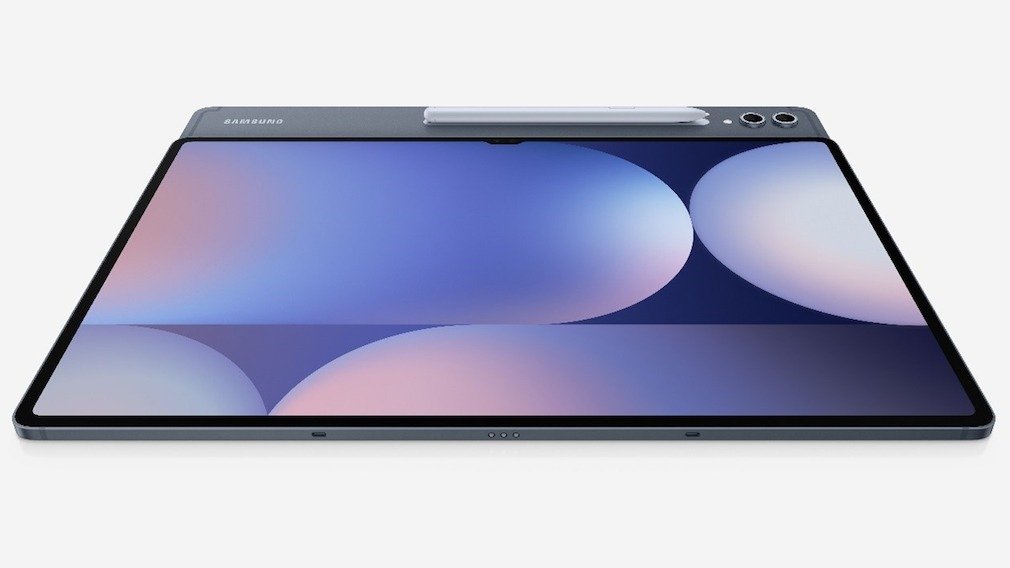
This is an absolutely gorgeous means of viewing all sorts of media and web content, with deep blacks and rich colours, aided by HDR10+ compatibility. Samsung uses a slightly more pumped-up Vivid screen mode by default, but it still looks great to my eyes. If, like me, you prefer your colours to look a little more lifelike, you can switch to a more muted Natural mode.
Samsung takes a different approach to Apple when it comes to aspect ratio, with a 16:10 balance giving a wider screen that is better suited to video playback. You’ll still get borders on YouTube and streaming content, but far less than on any iPad.
Conversely, the Galaxy Tab S10 Plus feels a little odd when consuming content in portrait mode, and even a little cramped when attempting productivity tasks in either orientation.
That’s a minor quibble, though. The Galaxy Tab S10 Plus’s display remains a beautiful canvas, especially if entertainment is your main use case.
Performance
- Mediatek Density 9300+
- 12GB of RAM
- 256 or 512GB storage
In an interesting move, Samsung has ditched Qualcomm for this year’s flagship tablets and switched to Mediatek’s Dimensity 9300+. This is probably a cost-saving measure.
It’s the same chip that powers the Samsung Galaxy Tab S10 Ultra, and it’s backed by the same 12GB of RAM.

That’s largely thanks to Apple, which offers the iPad Pro with its excellent M4 chip for around the same price, and which decimates the Galaxy Tab S10 Plus in most benchmarks.
Perhaps even more damaging is the presence of the latest iPad Air (2024) with Apple’s M2 chip, which still manages to deliver a solid performance.
In terms of Android tablets, the Galaxy Tab S10 Plus is faster than the Galaxy Tab S9 Plus, with a 20% (ish) increase in multi-core scores. It does, however, fall a little behind the gaming-focused RedMagic Nova Tablet and even the Galaxy Tab S10 Ultra, both of which broke through the 7000 multi-core mark.
The graphical benchmark results are decent, if not the best in class. In fact, the Galaxy Tab S10 Plus runs high-powered games smoothly and consistently. I was able to play a good hour of Wreckfest on maxed-out graphics settings with a fairly solid frame rate that hovered around the 60fps mark. It didn’t heat up too much either.
Samsung’s tablet is generally fast, with no problems running multiple apps side-by-side and layered in multiple floating windows. It should prove a capable productivity tool, if that is your aim. Again, though, productivity hounds will be better off with Apple.
The Tab S10 Plus comes with either 256GB or 512GB of storage, which can be expanded via the aforementioned microSD card slot. Unlike the Ultra, there’s no Wi-Fi 7 support, but you do get Wi-Fi 6E instead.
Cameras
- 12MP & 8MP rear cameras
- 12MP selfie camera
- Decent for video calls
You know the score with tablets by now. If you’re relying on one for your everyday photography, you’re doing it all wrong.
Not only are tablets too cumbersome for the task, but their cameras are invariably several orders of magnitude inferior to those on smartphones that cost half as much.

Such is the case with the Galaxy Tab S10 Plus, which has exactly the same dual-camera setup as the Galaxy Tab S9 Plus – a 12MP main and an 8MP ultra-wide. And to be fair, that’s still more than most people will need from their tablet camera.
For what it’s worth, the image quality is just fine in good lighting. Samsung’s usual over-the-top colour science covers a multitude of photographic sins, which is probably welcome in such a limited setup.

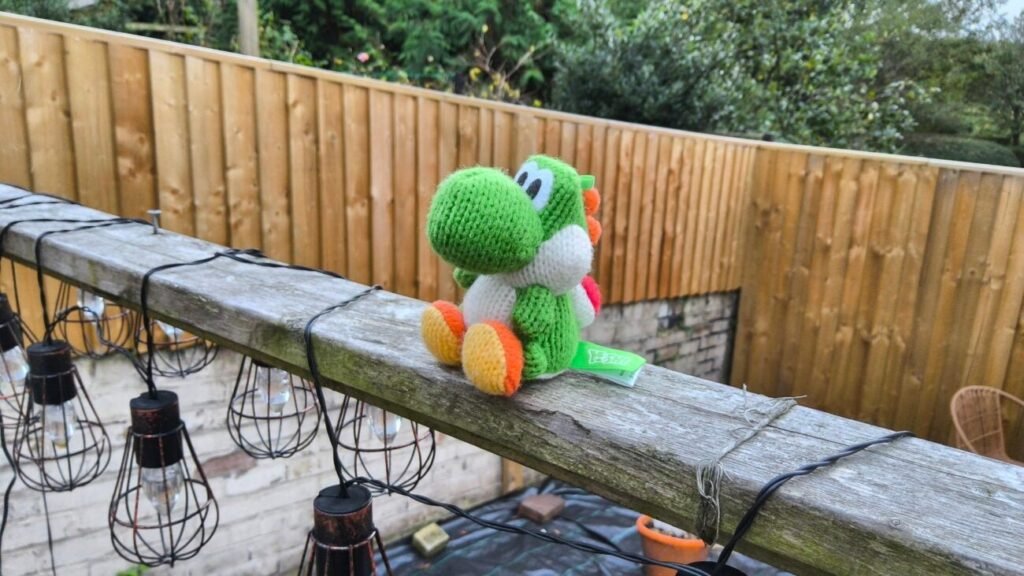

Far more consequential is the Galaxy Tab S10 Plus’s 8MP front camera, which you’ll be relying on for video calls. It’s an adequate selfie camera and a decent one for video calls – not least because of its ultra-wide perspective, which makes it much easier to stay in view.
If you’re looking for a hardcore video-calling machine, the Tab S10 Ultra has a pair of 12MP front-facing cameras for even more clarity and shooting options. But this cheaper tablet will handle your calls well, and certainly better than a mid-range laptop.
Software & AI
- Android 14 with One UI 6.1
- Galaxy AI smarts
- Seven years of OS upgrades promised
The Galaxy Tab S10 Plus runs Samsung’s own One UI 6.1 skin on top of Android 14. It’s a full-featured, easy-to-navigate OS that will be largely familiar to many of you, especially if you’ve used Samsung phones in the past.
Samsung’s split-screen implementation makes it nice and easy to run three apps side-by-side, as well as additional apps in floating windows on top. They all run smoothly, as we’ve already mentioned.

Apart from Samsung’s own applications, of which there are many, there isn’t too much bloatware. There’s a folder with three Microsoft applications, which can be useful if productivity is important to you, and you also get Netflix pre-installed. All justifiable inclusions.
Samsung’s own additions vary in usefulness. You’ll never convince me that we need a second web browser, especially one as mundane as Samsung Internet – although the ability to quickly summarise a website using the handy AI tool might be useful to some.
Elsewhere, Samsung Notes is a genuinely powerful note-taking app, especially if you’re keen to get to grips with the S Pen stylus. You can use this app to draw a picture using a wide range of pen tools, or scribble handwritten notes. You can even have the app recognise your handwriting and turn it into digital text.

You’ll also find one of the company’s most impressive AI tools in Samsung Notes. Sketch to Image turns your childish sketches into full-fledged works of art with uncanny intuitiveness. Is it useful? Not really, but it’s a great way to show off the power of today’s AI.
Elsewhere, Galaxy AI can do things like remove and resize people and objects in images, transcribe and summarise voice recordings, and more. There’s also Google’s Circle to Search, which lets you initiate a powerful contextual Gen-AI search of whatever’s on the screen by pressing and holding the home button.
The various Gen-AI tasks available here, as with all of Samsung’s 2024 smartphones and tablets, vary in their usefulness and effectiveness. But they’re as well integrated here as they are on any other Android tablet, and we’re curious to see how they develop.
Image credit (Trusted Reviews)
It’s also possible to use Samsung’s DeX software, which turns the tablet into a full Android desktop, although you’ll need a keyboard case to take advantage of this. We didn’t receive one for this review.
Along with Google and Apple, Samsung has some of the best software support in the business. The Galaxy Tab S10 Plus is guaranteed to receive OS updates and security patches for seven years. That’s as good as it gets in the tablet business.
Battery life
- 10,090mAh battery
- 45W fast charge
- No charger in the box
You’re probably picking up on a bit of a trend here, but the Samsung Galaxy Tab S10 Plus has exactly the same battery and charging specifications as its predecessor, the Samsung Galaxy Tab S9 Plus.
Once again, you get a fairly substantial 10,090mAh battery, although in testing I found evidence that Samsung may have improved its power consumption a little. Perhaps we can thank the new Dimensity 9300+ chip.
An hour of HDR video streaming over Wi-Fi here drained 7 per cent of a charge, which seems like an improvement on the Tab S9 Plus’s 10 per cent, although you have to admit that the test environment was far from identical between the two. Meanwhile, 30 minutes of light gaming on Slay the Spire only drained 4 per cent.
Together with other practical and benchmark tests, I found that the Galaxy Tab S10 Plus will probably get you through a light working day on a single charge. If your usage is more mixed and intensive, you might want to pack a charger.
Not that Samsung will provide you with one. The Tab S10 Plus does support wired charging of up to 45W, if you have one at hand. Using a 65W Samsung laptop charger, I was able to get the Galaxy Tab S10 Plus from zero to 100 percent in just under 90 minutes.
It’s not the fastest on the market – the RedMagic Nova Tablet, for example, does it in about an hour – but it’s not the worst either.
Final thoughts
Samsung hasn’t tinkered with its Plus tablet formula this year, offering a familiar full-size tablet package. It’s a very capable one, though, with an excellent 12.4-inch OLED display, solid performance and a brilliant bundled S Pen stylus.
The design hasn’t changed, but it’s still one of the slimmest and most comfortable to hold of its kind. Meanwhile, the battery will get you through a full day of light productivity or media consumption.
However, it’s still not the ideal tablet for productivity hounds. Apple’s iPad Air and iPad Pro family outperform it and have better app support. Meanwhile, Samsung’s AI tools range from cool but pointless to genuinely useful.
We’re not entirely sure why Samsung has decided to drop its smaller model, but the Galaxy S10 Plus remains an easy recommendation for anyone looking for a capable super-sized Android tablet, especially if media consumption and note-taking are priorities.
